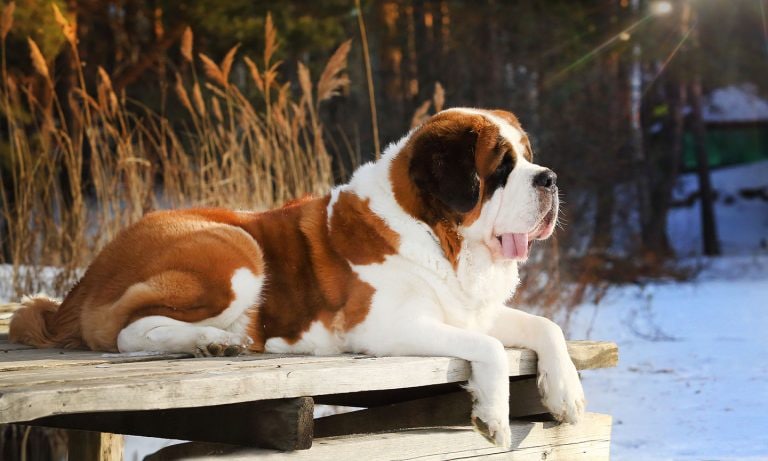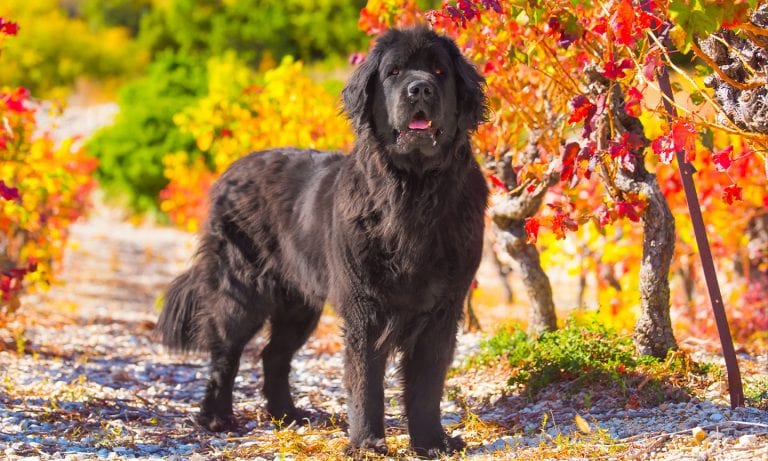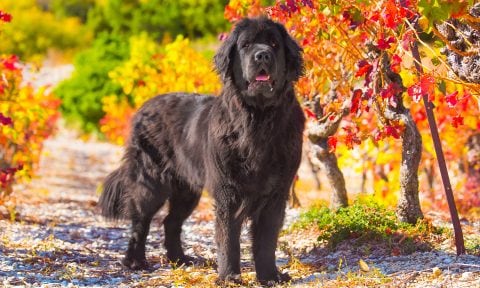Saint Bernard vs Newfoundland

Breed Snapshot
Best For
Drooly gentle giants, Saint Bernards are best for larger homes with experienced pet parents who can provide lots of focused training and regular exercise—and keep up with their grooming needs. Known for their calm...
Drooly gentle giants, Saint Bernards are best for larger homes with experienced pet parents who can provide lots of focused training and regular exercise—and keep up with their grooming needs. Known for their calm and affectionate nature, these teddy bears are kid- and pet-friendly, to boot.
Saint Bernard Temperament
Would you ever expect your personal bodyguard to be mistaken for a floofy teddy bear? Probably not, but you should. (Because: safety first. And also because: adorable.) Saint Bernards’ gentle, calm demeanor with a dash of playfulness are a natural fit for homes with older children, other dogs and eve...
Would you ever expect your personal bodyguard to be mistaken for a floofy teddy bear? Probably not, but you should. (Because: safety first. And also because: adorable.) Saint Bernards’ gentle, calm demeanor with a dash of playfulness are a natural fit for homes with older children, other dogs and even friendly felines. They’ll also mesh with younger children, but littler kiddos will need extra supervision to ensure they can respect your pup’s boundaries.
A Saint Bernard dog doesn’t always comprehend just how big they are, which can cause some consternation and tears when playing with tipsy tots or unstable adults (or tipsy adults, for that matter). Training for both humans and the dog is a must to be sure nobody accidentally gets knocked over during backyard romps or in-home zoomies. Saints are friendly dogs (and they swear they didn’t mean to knock you down! They thought you were trying to start a game of tag!) and will stay that way with a loving home and positive reinforcement-based training. In general, Saints are not known to bite, but it’s always important to properly socialize and train any dog. Socializing your Saint Bernard puppy before 20-24 weeks of age allows your outgoing pup to learn good manners and blossom as a beloved family pet.
If it looks like you’re going to do something fun, Saints will want to join you, no questions asked. They’re in the car before you can even find your keys, ready for a nature trail adventure or a Sunday drive through the country. Whatever their human is doing, they want to mirror the activity or supervise from a cozy spot next to your feet.
If you have a job you need doing, give it to a Saint, and they will be more than happy to check it off your to-do list. Saint Bernards are a working breed who love to help people. Give them a chore, like helping feed livestock on a farm or serving as a door greeter at your small business, and they’ll be happy campers. Saints are eager to please. You’ll know the Saint Bernard is in their element when they can’t stop the drool from flowing and their tail from wagging.
Saint Bernard Traits

Breed Snapshot
Best For
Newfoundlands, known for their gentle giant demeanor, need regular exercise and grooming. They thrive in families with space and love water activities.
Newfoundland Temperament
Newfoundlands are known for having a patient and gentle personality. They love being around their people and are naturally friendly with strangers. Just like any other breed, they need early socialization (aka exposure to new people, places and things) to understand how to play appropriately with other dogs; sometimes the goofy Newfie doesn’t realize...
Newfoundlands are known for having a patient and gentle personality. They love being around their people and are naturally friendly with strangers. Just like any other breed, they need early socialization (aka exposure to new people, places and things) to understand how to play appropriately with other dogs; sometimes the goofy Newfie doesn’t realize how big they are! But consistent training will help your Newfoundland puppy grow up to be a confident, well-mannered dog.
The sweet-tempered Newfoundland makes a great family dog, as they typically get along well with kids of all ages, including babies and toddlers. While it may be cute, make sure your child doesn’t sit or ride on your Newfie. The dog may tolerate it, but as they get older, health problems like hip dysplasia can make them uncomfortable. This breed isn’t known for having aggressive tendencies, so pain is about the only reason a Newfoundland would growl or bite (outside of typical puppy behavior).
While the Newfoundland breed is often treated as family (especially in the United States), they are still used as working dogs in their home provinces of Newfoundland and Labrador, Canada. Originally bred for their skill at water rescues and to haul in fishing nets, today, the dogs are used for pulling carts or as pack horses. (And you may find they enjoy participating in “working” dog sports like carting and drafting competitions.)




